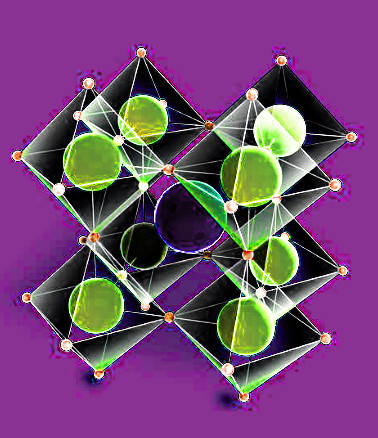High-tech metal observed
 Australian researchers have described the first ever observation of a native ferroelectric metal.
Australian researchers have described the first ever observation of a native ferroelectric metal.
UNSW researchers say they have found the first example of a native metal with bistable and electrically switchable spontaneous polarisation states - the hallmark of ferroelectricity.
Ferroelectricity is best understood in relation to ferromagnetism.
A ferromagnetic material displays permanent magnetism - it is a magnet with north and south pole.
Ferroelectric material likewise displays an electrical property called a permanent electric polarisation, with electric dipoles consisting of equal, but oppositely charged ends or poles.
In ferroelectric materials, these electric dipoles exist at the unit cell level and give rise to a non-vanishing permanent electric dipole moment.
This spontaneous electric dipole moment can be repeatedly transitioned between two or more states or directions using an external electric field - a property utilised in nano-electronic computer memory, RFID cards, medical ultrasound transducers, infrared cameras, submarine sonar, vibration and pressure sensors, and precision actuators.
Until now, ferroelectricity has only been observed in materials that are insulating or semiconducting rather than metallic, because conduction electrons in metals screen-out the static internal fields arising from the dipole moment.
“We found coexistence of native metallicity and ferroelectricity in bulk crystalline tungsten ditelluride (WTe2) at room temperature,” explains study author Dr Pankaj Sharma.
“We demonstrated that the ferroelectric state is switchable under an external electrical bias and explain the mechanism for 'metallic ferroelectricity' in WTe2 through a systematic study of the crystal structure, electronic transport measurements and theoretical considerations."
“A van der Waals material that is both metallic and ferroelectric in its bulk crystalline form at room temperature has potential for new nano-electronics applications,” says author Dr Feixiang Xiang.
For the latest study, bulk single-crystalline tungsten ditelluride (WTe2) (which belongs to a class of materials known as transition metal dichalcogenides [TMDCs]) was probed by spectroscopic electrical transport measurements, conductive-atomic force microscopy (c-AFM) to confirm its metallic behaviour, and by piezo-response force microscopy (PFM) to map the polarisation, detecting lattice deformation due to an applied electric field.
Ferroelectric domains - ie, the regions with oppositely oriented direction of polarisation - were directly visualised in freshly-cleaved WTe2 single crystals.
Spectroscopic-PFM measurements with top electrode in a capacitor geometry was used to demonstrate switching of the ferroelectric polarisation.







 Print
Print